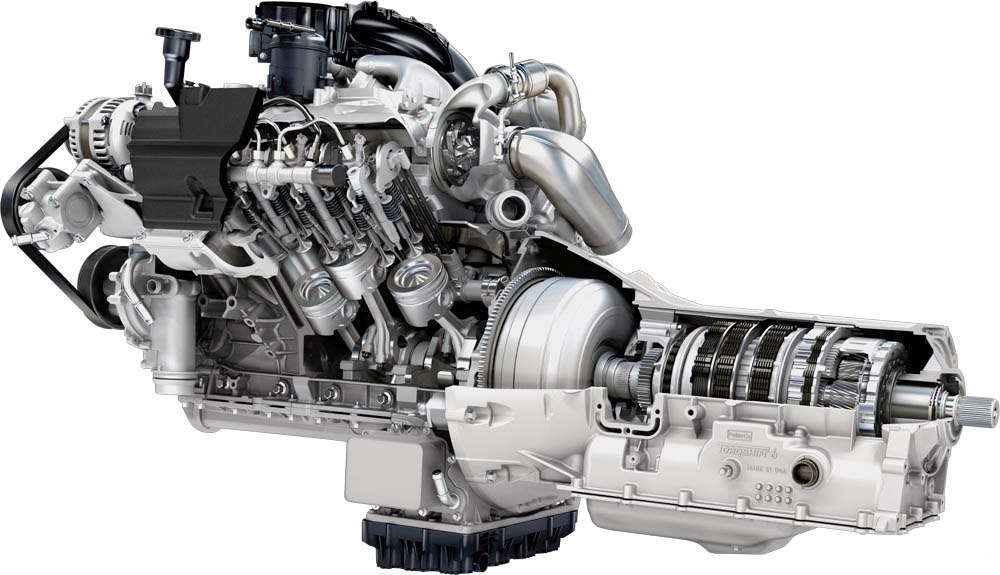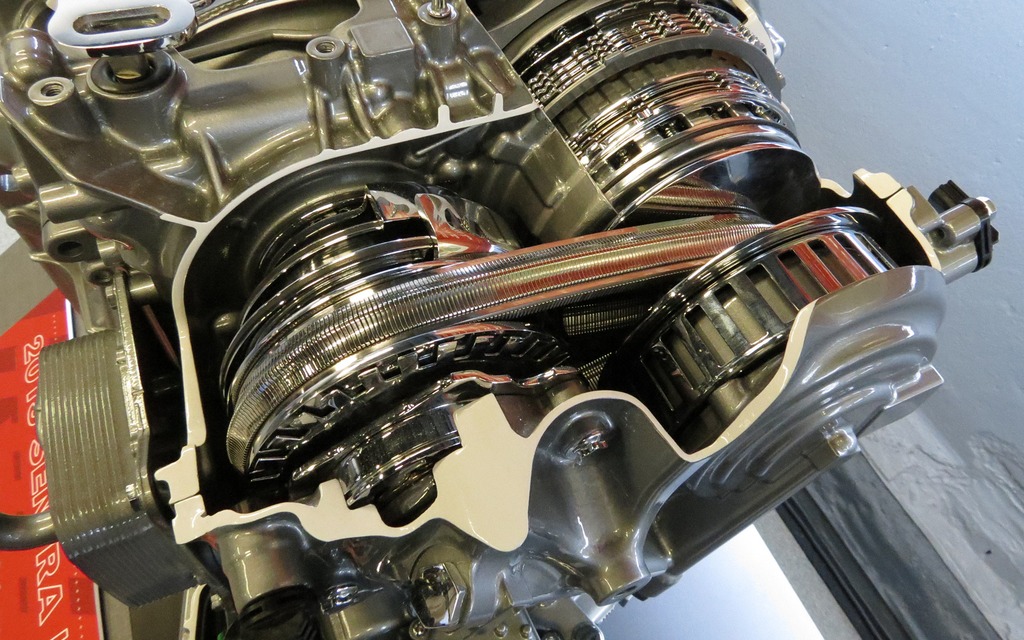The Truth About Automatic Engine Stop-start Systems
It's the most glaring way carmakers cook the books on official fuel tests … and in the process, also make that shiny new car a lot less pleasant to drive
See Also:
- Which transmission is best >>
- Why airbags don't deploy >>
- How to test drive like a pro >>
- What's really in car exhaust >>
- Correct tyre pressure >>
VIDEO TRANSCRIPT
I hate it when carmakers use R&D to satisfy their own agendas and not yours. I especially hate it when they do the whole Bankok/lady-boy thing: They wrap it up in a slutty dress and whisper how good it’s going to be in your ear.
It's a key disconnection between the promise and the delivered reality.
I’m John Cadogan, the world’s only living garden gnome at AutoExpert.com.au - the place where Aussie new car buyers save thousands on their next new cars, without having to remove their trousers in front of a car salesman, not once, which is never dignified, when you think about it. At least, not between entree and dessert. Hit me up here >> if you’re in the market.
WHAT IS AUTO ENGINE STOP-START TECH?
One of the most glaring examples of this carmaker agenda self-serving design is the auto engine shutdown and restart system.
You drive along. You stop at a red light. The engine automatically shuts down. The light goes green, you start lifting off the brake, and the engine kicks back into life, as if by magic.
We’re talking about that.
Systems like Mazda’s i-Stop - and seemingly 100 other proprietary names for similar bullshit technology.
THE KEY QUESTION
I get questions about this all the time - an example of which came recently in the usual way (carrier pigeon):
“As an apprentice, 30 years ago, we were taught that starting up an engine comprised about 80 per cent of the total wear and tear on that engine. Also, that idling for 10 minutes used about the same amount of fuel as starting the engine. Given that these facts still hold true, how can the stop/start feature be a good thing? Or is it a case of marketing bullshit to send more work to the service department?” - John T
In addition to that, I also routinely get asked about premature wear and tear on the starter system.
So here it is: The truth about bullshit auto engine shutdown and restart systems.
DO YOU ACTUALLY SAVE FUEL?
Number one with a bullet: Automatic engine shutdown and restart systems save you bugger-all fuel.
Claims by carmakers that you will save any appreciable money are unmitigated bullshit.
You can idle your engine all day long, and it’s still not going to cost you as much as a burger and fries.
Engines just don’t consume much fuel at idle - they’re really only driving the ancillaries, overcoming their own internal friction and a bit of drag in the torque converter (if they’re driving an automatic transmission).
The real benefit of these systems is not to you - it's actually the carmaker that derives a benefit from them.
THE REAL REASON THESE SYSTEMS EXIST
The real reason these automated systems exist in many new cars is so that the carmaker can legally ‘game’ the official fuel consumption tests. We’ve discussed these tests before. They’re lab tests from which the official fuel figures are derived - and these numbers are very important to carmakers, because fuel consumption is increasingly important to regulators and buyers.
Unfortunately the tests are not very representative of actual driving. They’re just not - the official test numbers are always better than you can achieve out there, on the road, and that leads to a lot of customer dissatisfaction. Unfortunately.
The most non-representative aspect of the tests is the amount of time the cars spend stopped in both the city and in the highway tests as well. Those valleys over there? The car is stopped. Together, both tests take 20 minutes - and around one-third of that time is spent stopped. In the city cycle test - it’s almost half the total time stopped.
So if you’re a carmaker, and you’re in this intense competition with all other carmakers, and you include the engine shutdown feature in the car, almost half of the official city cycle test is spent with the engine shut down. You’ll make incremental gains over a competitor without that system in his car. So, congratulations - you just gamed the system, and there’s nothing illegal about it.
DRIVING (& LIVING) WITH IT
But what this means for you, the car owner is: you have to wear it. And it’s unpleasant - especially on restart. Especially in a diesel, which has to battle a ton of compression when it restarts. And especially if your car has a CVT transmission. They tend to have pretty aggressive torque converters. So the restart is unrefined, at best. It’s awful.
It’s like this: you drive an Audi with stop/start technology. It’s great … the engine shuts down when you stop at a red light. All good. Nice and smooth. But the re-start feels like crack-smoking zombies are attacking under the hood.
In terms of refinement, it’s like some German engineer really high up in the company said - ‘we’ll give this one to Fritz - he did his best work at Lada in the 1980s’. Newsflash, German carmakers: It’s not luxury when the car feels like it’s on active duty and taking fire in Fallujah.
BUT CAN YOU TURN IT OFF?
To make matters worse, some carmakers - and I’m looking at you, Subaru and Mazda - they don’t let you turn the system off, or at least not as completely ‘off’ as maybe you’d like. And sure, you can press and hold the button to temporarily disable it, but every time you get back in the car for a fresh crack at driving, it’s default state on startup is ‘active’.
And if there is a way to disable it permanently … well, you need to be a computer programmer or a 15-year-old to figure it out. Last time I asked Mazda about this, about a year or so ago, they said there wasn’t.
And that, right there, that’s the height of Japanese engineering arrogance, when you think about it. They’ve decided that they know better than you how you want the car to function. It’s like you wanting the radio off, and therefore you turn it off, and every time you get back in the car, it’s on again, with the volume on ‘9’. That’s gunna get old. I guess they know best. There’s no doubt. Whatsoever. At least to them...
SYSTEM DURABILITY
These other points, though, about wear and tear. First on the starting system itself: You can design anything to be reliable, for any number of cycles. If the system shuts down and re-starts (I dunno) 50 times a day, six days a week, that’s 300 cycles a week. That’s 15,000 cycles a year, or 300,000 cycles in a 20-year service life for the vehicle. I don’t see that being an especially uphill battle for a half-competent R&D team.
So: The durability of the starter and solenoid - et cetera - all the hardware - not a problem.
ENGINE WEAR ON STARTUP
To John’s carrier pigeon points about wear and tear, and fuel consumption. Frankly, wear and tear on an engine is only ever high when you start the engine cold. The clearances are wrong, because the metal parts have not expanded to their usual operating temperature, right?
Additionally, a lot of oil has managed to drain away from the bearings and other critical parts, over several hours, while you’ve been doing whatever else, and it takes a few revolutions of the crank to pressurise all of the oil galleries, and of course if you never let the engine warm up you also get quite a lot of water contamination in the sump, and that doesn’t help either.
So wear and tear is not so much a function of starting up - it’s a function of really early initial cold operation.
HOT STARTS
None of that’s really a problem with a hot start. The engine’s ready to rip, there’s plenty of oil ‘upstairs’ and the parts are all toasty, so the wear rate then is essentially zero. And these systems are pretty clever - some of them even organise the engine to stop at exactly the right spot for a restart.
Essentially that means stopping near top dead centre on the compression stroke on one one of the cylinders. It’s basically a ticking time bomb like that - or, more accurately, it’s pretty easy to kick over - it doesn’t really take much of a nudge from the starter to get the whole thing turning and burning in that state. You don’t use any additional fuel on a hot start in a modern engine either.
NEW -Vs- OLD ENGINES
John’s other point about fuel consumption on startup being high: two main factors there. First, which is still true today, you need a rich fuel/air mixture for a cold start. Fuel-injected engines do that automatically - like pulling the manual choke out in a really old car. Remember doing that? But that doesn’t apply restarting in traffic.
Secondly, when John was told this stuff as an apprentice in the 1980s, cars still had carburettors: Remember those? And carburettors had several imperfections, which is why they’ve been superseded. One of those one of which was when you opened the throttle, manifold vacuum drops, and that’s kind of inconvenient because you’re also using that vacuum to deliver the fuel through the carburettor.
So basically, fuel delivery stalls on the grid - just when you need more fuel. So that’s bad.
So if you don’t deal with that, in an engineering sense, it causes a bit of a flat spot - a hesitation - before the engine starts to pick up again. It’s like the engine has a stutter and then decides to get going. So, the conventional fix, the means of dealing with that, was the accelerator pump piston in the carbie. It’s designed to squirt in a bit of extra fuel to cure the stutter. To take it away.
Quite a bit of extra fuel though, which was somewhat wasteful - through the prism of contemporary engine design and fuel consumption standards.
So, if you’re as old as me - ie., older than Facebook minus 30 - you remember the convoluted ritual dad had to go through to start the family car. You remember fondly, perhaps, the arguments he had with mum, imparting this ‘knowledge’ so she could also operate the family chariot.
You know the drill: choke at three-quarters (not eleven sixteenths or seven eighths), two pumps on the gas, count ‘one potato, two potato’, pray, start - like that, hopefully. That’s all gone now - a fuel injected engine is always ready to go. And it does all that crap automatically. Thankfully.
BATTERY LIFE
So, finally, without wanting to be indelicate, the battery doesn’t really give a shit about multiple starts either.
(Some systems don't even use the car's battery, and rely instead on a capacitor to store sufficient charge to kick the engine over again at the lights.)
Car batteries are entirely tolerant of shallow restart cycles: start-charge-start-charge-start-charge, repeat. They love that. For years on end.
If you want to kill you car battery, deeply flatten it a few times in a row. That should make someone in the aftermarket industry very, very happy indeed.
Car batteries hate to be cycled deeply.
CONCLUSION
So there you have it: Auto stop-start technology. Clever technology, quite robust, but perversely arrogant and bullshit at the same time. And useless to you as a practical matter. Let’s not forget that. A perfect metaphor for many of the people I’ve met in the automotive industry right there.
And of course, complexity is the enemy of reliability. Because this crap is really not providing a tangible benefit to you, not only is it unrefined, but also it is therefore just something else to go horribly wrong, potentially, down the track.
There’s a pleasant thought.
So if you’re test driving a vehicle with automatic stop/start, definitely use the test drive as an opportunity to decide whether you can tolerate the restart in particular, and look into whether the default state on startup for that system is ‘active’, or whether it remains off if you decide you don’t like it. And don’t take the sales guy’s word for this either - test it out until you are satisfied. I’m John Cadogan. I hope this helps. Thanks for watching.











